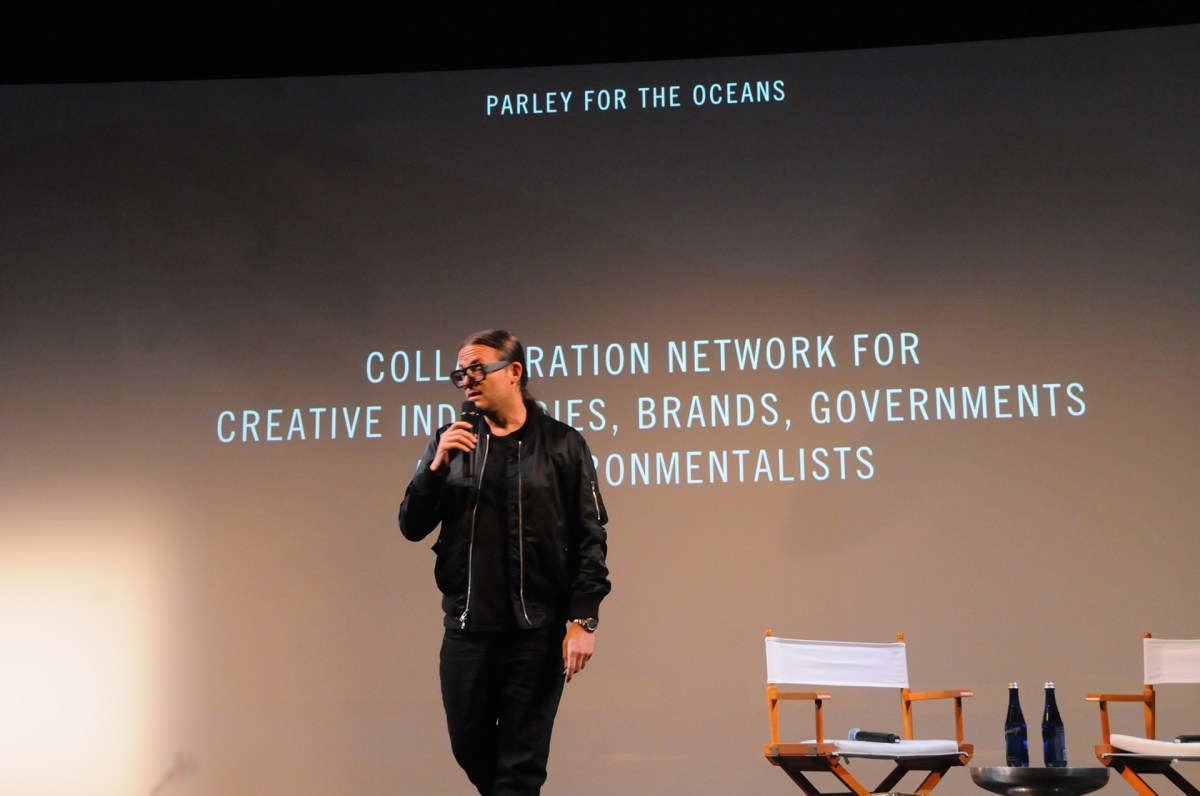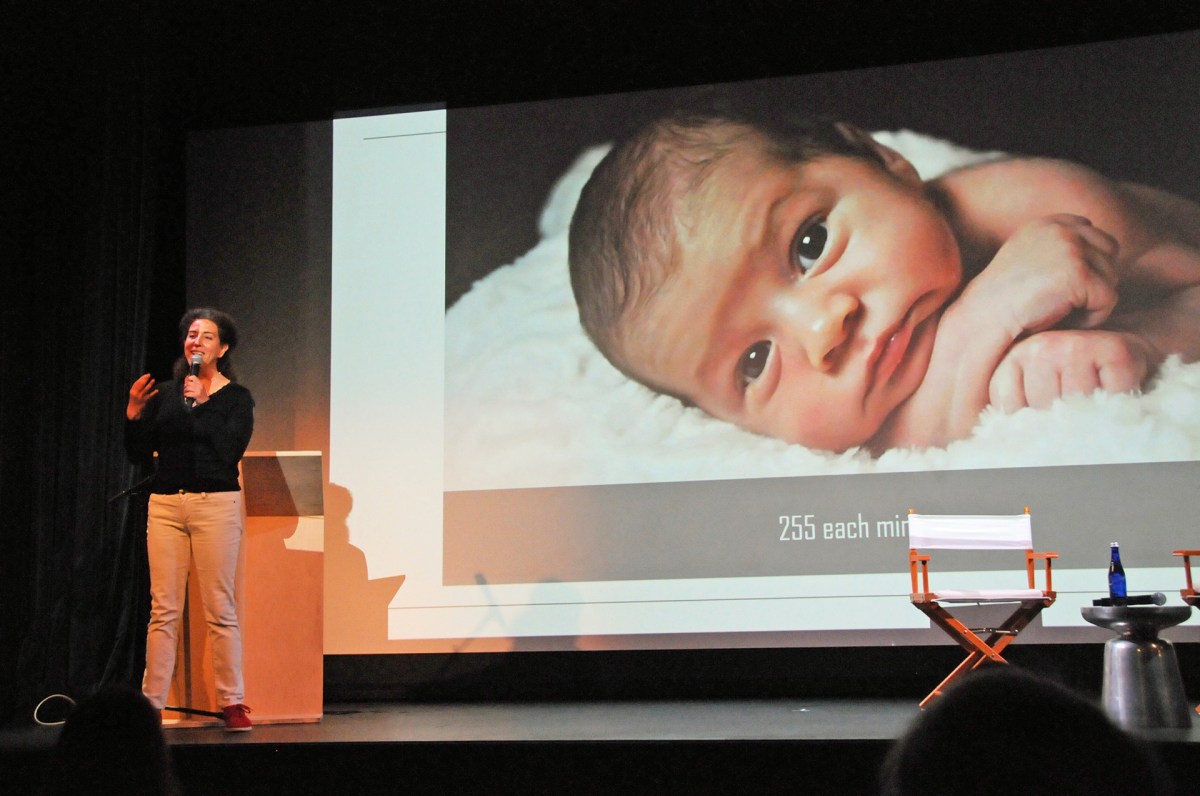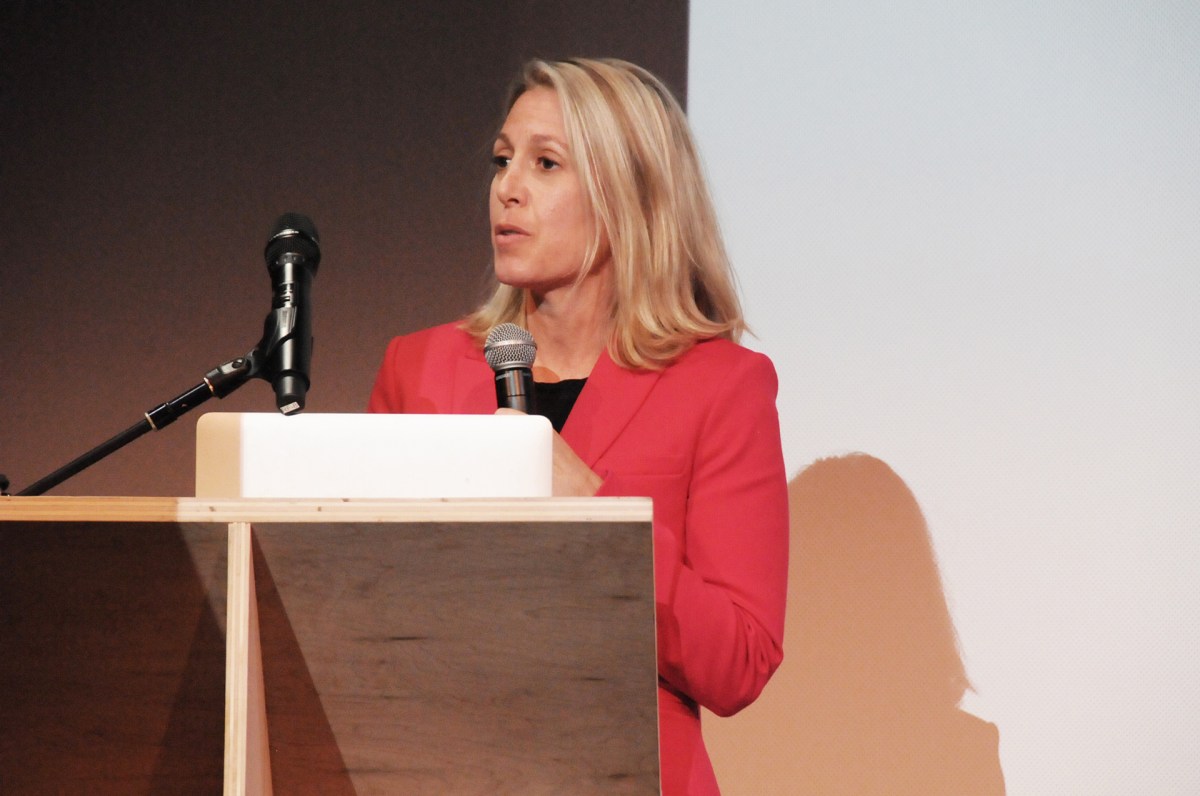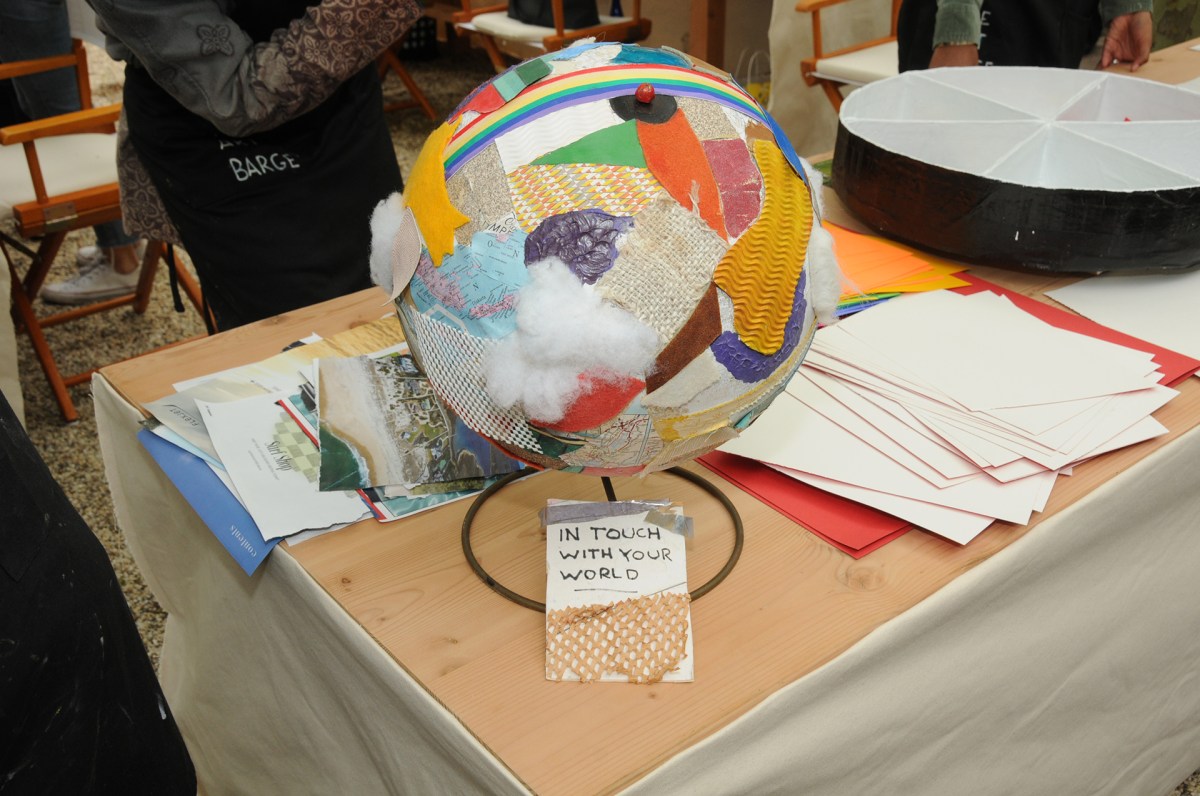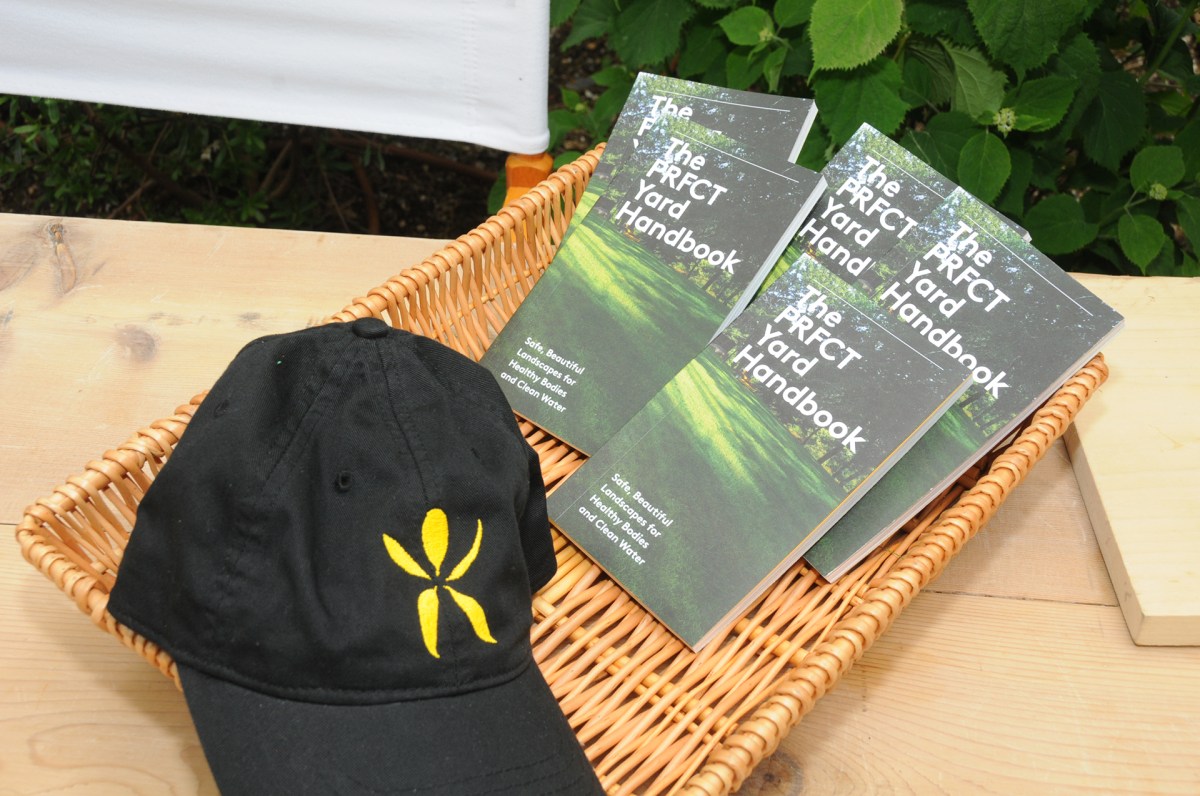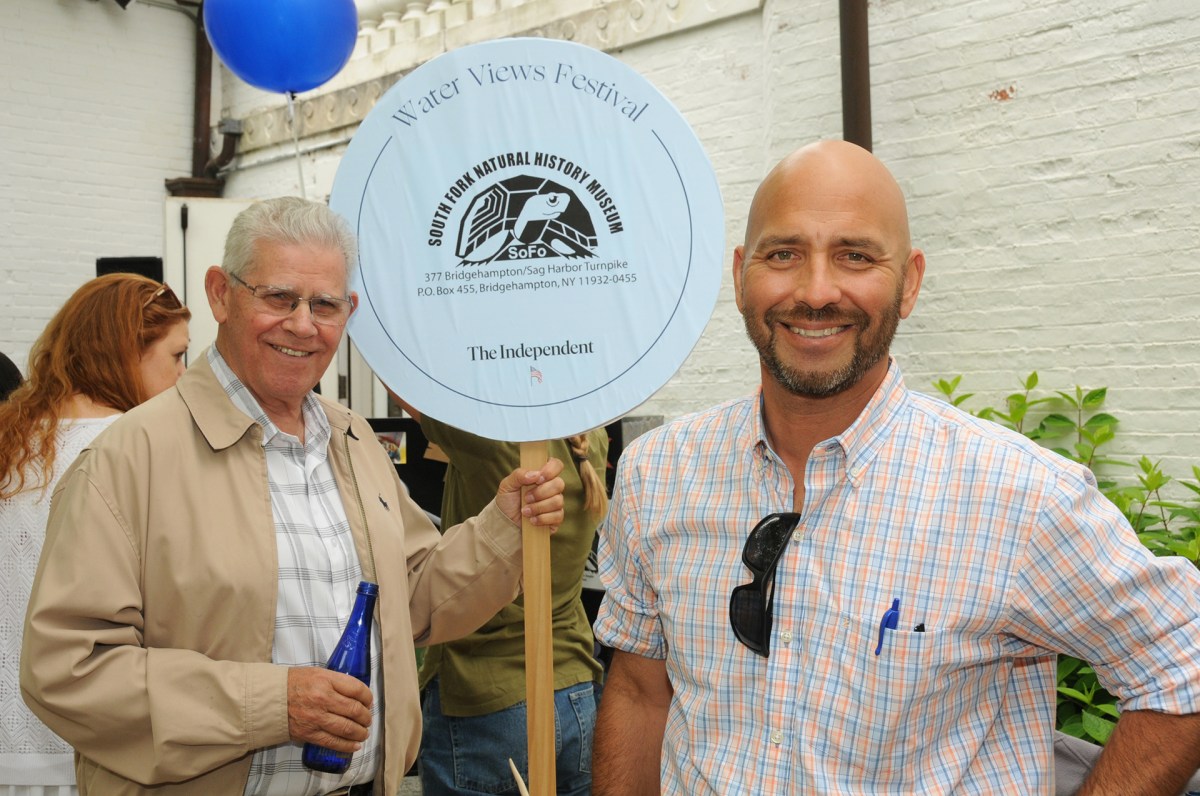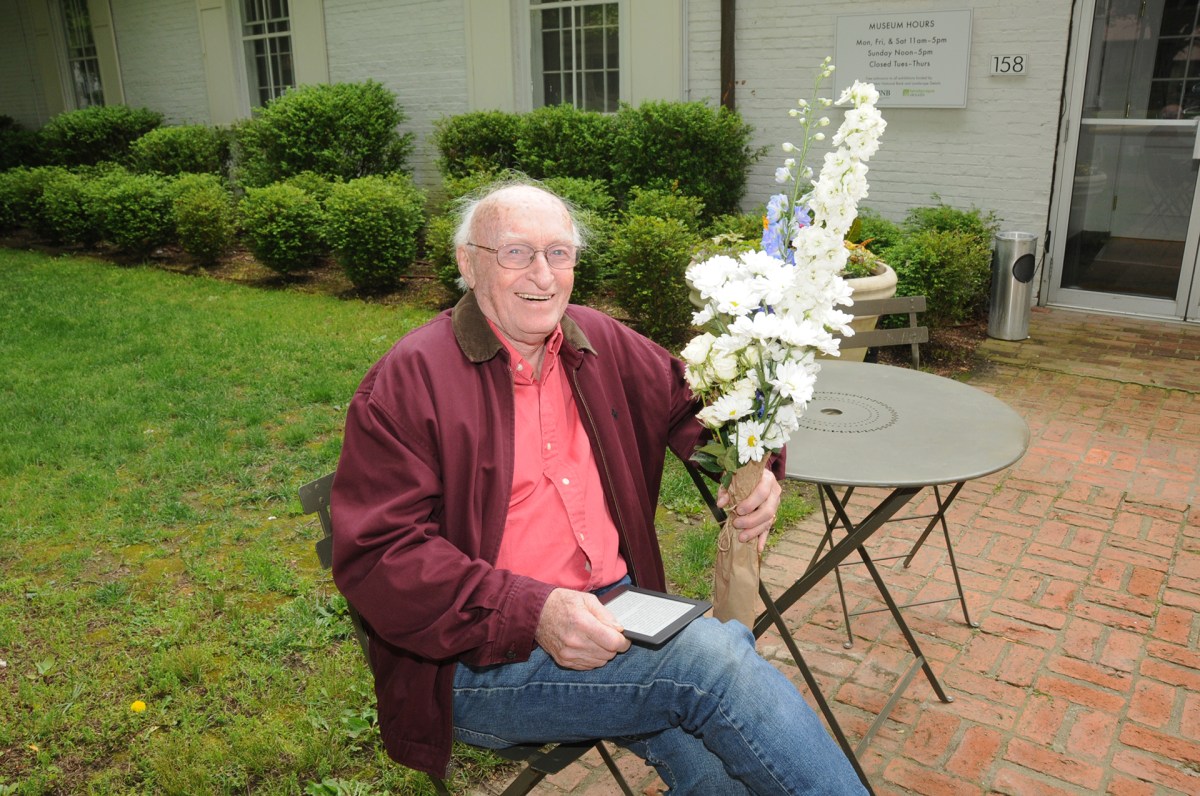Troubled Waters


The audience that filled the John Drew Theatre in East Hampton’s Guild Hall June 2 for The Independent’s Water Views Festival Sunday received both a wake-up call and a call to action from the speakers and panelists who took part.
Keynote speaker Cyrill Gutsch, whose environmental organization, Parley for the Oceans, has made the elimination of plastics its top priority, warned that the world’s oceans are reaching the point of no return and marine life could be effectively killed off by mid-century if the world does not react to the growing threats facing them.
CNN’s Don Lemon and Sara Davison, the executive director of the Friends of Georgica Pond Foundation, served as moderators.
Calling plastic, an estimated eight million tons of which is dumped in the oceans each year, a “design failure,” Gutsch said it was time for the world to give up the mantra of “reduce, reuse, recycle,” because it assumes that plastics are inert materials and not toxic to all forms of life.
He called for designers, businesses, and consumers alike to adopt a new mantra, “A.I.R.,” which stands for avoid plastic, intercept, and repurpose it, and redesign products that currently rely on plastic components.
Michael Ogden, an engineer and the founder of Natural Systems International, which designs water infrastructure projects around the world, looked at the issue on a more regional basis.
He described Long Island as an “extraordinary” place, not the least of which is because of its deep aquifer that provides a ready source of pure drinking water or its steady annual rainfalls, which help replenish it.
But he added that aquifer is threatened because many of the island’s houses rely on individual septic systems. “That’s basically flushing their toilets into the groundwater,” he said. “Out of sight, out of mind.” That process releases everything from nitrates to antibiotics, polluting the aquifer as well as surface waters, he said.
Taking Small Steps
Ogden urged audience members to take small steps such as reducing water use, eliminating the use of toxic chemicals, and volunteering for things like beach cleanups, and becoming involved in civic issues on the local level.
“You are blessed,” he said. “Take care of the garden.”
Edwina von Gal, the founder of the Perfect Earth Project, which educates homeowners about ways to remove the toxins from their landscapes, does just that.
“What we ask people to do is to make a commitment, a commitment to your property that you will do no harm,” she said. If you take that pledge seriously, that means you will stop using insecticides and other toxins that kill the good bugs with the bad, she said.
Von Gal said many people rely on chemical treatments because “they are afraid for some reason of the consequences.” It hasn’t helped, she said, that the landscape industry has for decades told them that an organic approach costs more and doesn’t work as well.
She noted that the American green lawn aesthetic goes back to the early post-World War II era when the United States had a surplus of chemicals that were diverted to creating cookie-cutter lawns “that had a kind of military precision that made everyone feel safe.”
She urged people to plant native species, water deeply but seldomly, use mulching mowers to fertilize lawns, and save leaf matter for valuable compost.
“Make a commitment to do no harm, make a commitment to fill it with life,” she said. “Let nature play.”
Studying Solutions
Beth Rattner, executive director of the Biomimicry Institute, said humans could also ask nature to work for them by studying how it solves its own problems and borrowing from those solutions for their own projects.
Thus, she said, scientists have studied whale fins or the energy produced by schools of fish to help them design and place more efficient wind turbines. Others have studied how lobsters so quickly replace their shells, to help create more environmentally friendly concrete.
“Nature does what we want to do without using fossil fuels, polluting the planet, or mortgaging the future,” she said.
The Biomimicry Institute is working on ways to provide a database of natural solutions that students could use as a research tool and encouraging young entrepreneurs to come up with their own projects, from biodegradable planters to self-watering greenhouses with design elements borrowed from spider webs.
“You can start when kids are in middle school. Why study an airplane when you can study a hummingbird?” she asked. “Your respect goes way up when you understand what a hummingbird is capable of doing.”
Dr. Aly Cohen, who started The Smart Human to inform people of environmental health concerns in their homes and practical solutions to them, said that keeping up with the threats to our health is a daunting challenge. A thousand new chemicals are developed a year and only a handful have been banned, she said.
Since many chemicals have only been invented in the past century, it is next-to-impossible for the human body to adjust to them all, she said. Children are particularly vulnerable to harmful chemicals. It is important, she said, for people to minimize their exposure to harmful chemicals and take special care when it comes to drinking water. Cohen suggested that everyone should filter their drinking water, be it from a well or public source.
At the County Level
The Water Views Festival included a panel consisting of Dr. Christopher Gobler of Stony Brook University, Dr. Stuart Lowrie of the Nature Conservancy, Dorian Dale of Suffolk County, and Suffolk County Legislator Bridget Fleming.
The panelists agreed that Long Island’s growing population and reliance on individual septic systems that do nothing to reduce the amount of nitrogen and other pollutants entering the groundwater was having disastrous effects on both its groundwater and surface waters, polluting drinking wells and spurring harmful algal blooms that kill flora and fauna.
Gobler said new alternative wastewater treatment systems that reduce nitrogen by as much as 90 percent are the current best tool available for fighting the crisis.
Lowrie said his organization had conducted surveys of Long Islanders and learned the population valued its water bodies and would be willing to support funding to protect them. He noted that East Hampton and Southampton approved measures to allocate 20 percent of Community Preservation Fund revenues to water quality projects.
Dale said the same was true at the county level. He said County Executive Steve Bellone had identified nitrogen pollution as public enemy number one and had fought to obtain funding to help homeowners pay for the treatment systems.
Fleming took a poke at County Comptroller John Kennedy who sent tax forms to residents who received grants for wastewater treatment systems, suggesting he did so because he is running for county executive against Bellone. She said the county “is confident we are on strong legal footing” and noted that a similar grant program has been in place in Maryland for a decade and has never been challenged by the Internal Revenue Service.
After the presentation, an eco-fair with booths from sponsors ranging from the South Fork Natural History Museum, the Surfrider Foundation, and the building company Telemark was held on the Guild Hall grounds.
sjkotz@indyeastend.com
















































